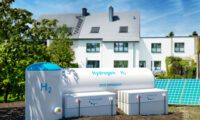How Tidal Energy Works and Its Potential as a Renewable Energy Source
Tidal energy is a type of renewable energy that harnesses the power of the ocean’s tides to generate electricity. As the world’s demand for energy increases and concerns about climate change and air pollution continue to grow, tidal energy is becoming a potential source of clean, renewable energy.
How Tidal Energy Works
The gravitational pull of the moon and sun and the earth’s rotation create tides in the oceans. Coastlines experience two low tides and two high tides within a 24-hour cycle. Tidal energy is powered by the ocean waters’ surge during the tides’ rise and fall.
Electricity can be generated by the tides in areas where there is a significant tidal range. A tidal range is the vertical difference in height between consecutive high and low waters over a tidal cycle. To produce energy from the tides, the levels must vary by five meters. Tidal plants can only be installed along the coastline and use a system of turbines and paddles; a generator is used to convert the movement of the tides into electricity.
Harnessing Tidal Energy
Tidal energy systems come in various forms. The three most common types of tidal energy systems are tidal barrages, tidal turbines, and tidal fences.
Tidal Barrages
Tidal barrages are large dams built across estuaries, bays, or other areas with a significant tidal range. When the tide comes in, the water fills the basin behind the barrage, and when the tide goes out, the water flows back through turbines in the dam, generating electricity.
Tidal barrages are the most established form of tidal energy generation, with the first operational plant being built in La Rance, France, in 1966. They have a significant advantage over other tidal energy systems because they can generate electricity relatively constantly, as the tidal cycle is predictable. They can also store energy, which can be released during peak demand periods.
However, tidal barrages are costly to build and have significant environmental impacts. The construction of a barrage alters the natural tidal flow, causing a change in the salinity of the water and disturbing the ecosystem of the surrounding area. The structures can also be a barrier for migrating fish and other marine species, potentially impacting their reproduction and survival.
Tidal Turbines
Tidal turbines, much like wind turbines, use kinetic energy to generate electricity, but are submerged underwater. They are typically installed on the seabed or anchored to the ocean floor, and their blades are designed to rotate with the tidal flow, turning a generator to produce electricity.
Tidal turbines have a much smaller environmental impact than tidal barrages, and their installation is less disruptive to the local ecosystem. They are also relatively cost-effective compared to tidal barrages and can be installed in various locations, including shallow and deep water.
However, tidal turbines have several challenges that need to be addressed. The moving parts are exposed to harsh underwater environments, requiring regular maintenance, which can be challenging in remote or offshore locations. The energy output of a single turbine is also relatively low, so a large number of turbines are needed to generate significant amounts of electricity.
Tidal Fences
Tidal fences, also known as tidal lagoons, are a hybrid between tidal barrages and tidal turbines. They consist of an array of underwater turbines that are anchored to the seabed and stretched across a section of the coastline, forming a semi-circular fence. The tidal flow drives the turbines, generating electricity.
Tidal fences have several advantages over tidal barrages. They have a lower environmental impact and are less expensive to build. They also have a smaller physical footprint, making them easier to integrate into the coastal environment. However, like tidal turbines, tidal fences require regular maintenance, and their energy output is relatively low.
The largest tidal fence facility is the Sihwa Lake Tidal Power Station in South Korea. It was completed in 2011 and has a total installed capacity of 254 MW, enough to power around 500,000 homes. The facility serves as a model for other countries looking to develop large-scale tidal energy projects.
Currently, there are no commercially operating tidal plants in the United States, although several demonstration projects are in various stages of development. According to the U.S. Energy Information Administration, only two production places exist for tidal power. Cook Inlet of Alaska has the second highest tidal range in North America and multiple locations in Maine.
The Potential of Tidal Energy: The Advantages and Disadvantages
Although tidal energy is still in its infancy, and there are only a few tidal plants in existence, it’s still a valuable source of renewable energy. However, it’s essential to consider its potential and understand its advantages and disadvantages.
Advantages of Tidal Power as a Renewable Energy Source
- Water is denser than wind and more powerful
- Tides are predictable and highly attractive for energy grid management
- Easy to install
- Renewable no greenhouse gasses
- Low impact on the environment
Disadvantages of Tidal Power
- Small output of energy
- Profitability / Expense
- Specific site requirements
- Tidal cycles don’t always match the daily consumption
- Adoption is slow
- Unknown environmental effects
- In the U.S., there are legal concerns about the underwater land ownership
While tidal energy has advantages and disadvantages, it has the potential to play a significant role in the global transition to renewable energy. As technology improves and the cost of energy generation from these sources continues to decrease, tidal energy systems are likely to become increasingly important in our efforts to reduce greenhouse gas emissions and mitigate the impacts of climate change.
Sources:
What our customers are saying
See why our power customers say we're the best electricity provider in Texas!
I was worried about getting electricity for my home through a prepaid company. I was calling around to see different rates then going through all the hassle of credit checks while dropping points each…
I have been with this company for several years and have been very happy since. Even when I moved, they made my usually stressful situation very easy and carefree. I recommend them to everyone that I…
I have enjoyed the service for 2 years now. In the beginning this service was planned to be temporary but with the service being so effective for me i decided to keep it for the long haul. I’m a happy customer.










